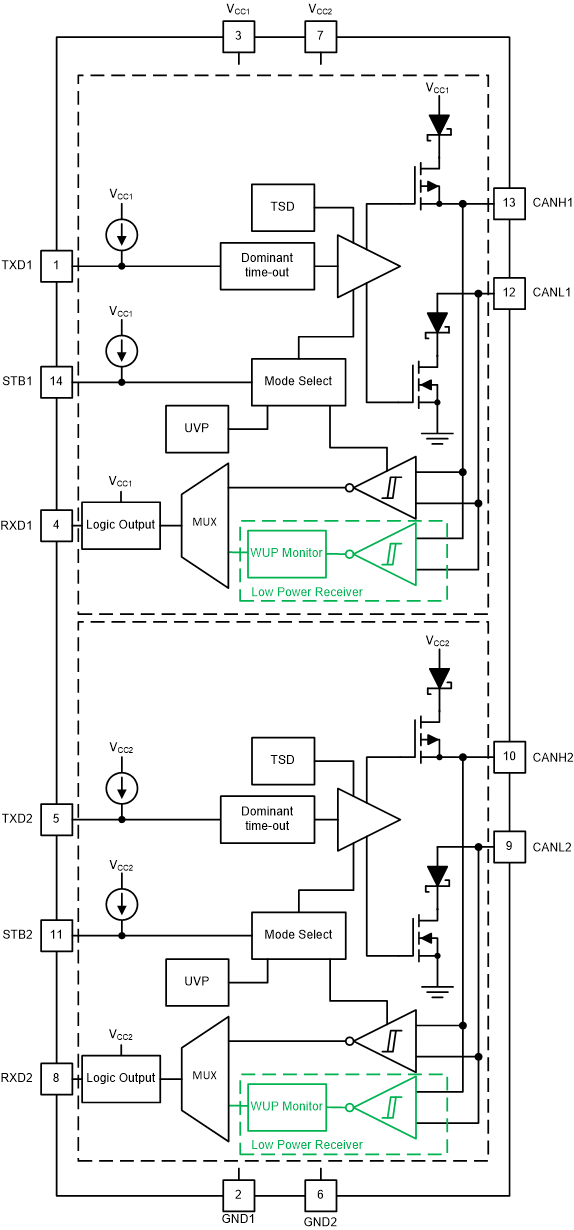SLLU355 October 2022 TCAN1046A-Q1 , TCAN1046AV-Q1
- TCAN1046A/V Evaluation Module
- Trademarks
- 1Introduction
-
2EVM Setup and Operation
- 2.1
Overview and Basic Operation Settings
- 2.1.1 VCC Power Supply (J6 and J21)
- 2.1.2 I/O Power Supply VIO (J17)
- 2.1.3 Transmit and Receive Connections(J11 and J22)
- 2.1.4 TXD Inputs (J11/J22, TP13 and TP14/TP29 and TP31)
- 2.1.5 RXD Outputs (J11/J22, TP15 and TP16/TP30 and TP34)
- 2.1.6 STBY inputs (J12 and J13/J24 and J25, TP10 and TP12/TP32 and TP33)
- 2.1.7 Bus Observation (J3 or J8/J14 or J19)
- 2.1.8 Bus protection
- 2.2 Using CAN Bus Load, Termination, and Protection Configurations
- 2.3 Using Customer Installable I/O Options for Current Limiting, Pullup and Pulldown, Noise Filtering
- 2.1
Overview and Basic Operation Settings
- 3CAN EVM Configuration for TCAN1046A and TCAN1046AV
3 CAN EVM Configuration for TCAN1046A and TCAN1046AV
The TCAN1046A/V device interfaces CAN protocol controllers with the physical bus in accordance to the ISO 11898 standard. These devices are compatible with the ISO 11898 High Speed CAN (Controller Area Network) Physical Layer standards: 11898-2. These devices are designed for use of up to 5 Mbit CAN systems, and they include many protection features providing device and CAN network robustness.
 Figure 3-1 TCAN1046A Block
Diagram
Figure 3-1 TCAN1046A Block
DiagramFigure 3-2 TCAN1046AV Block
Diagram